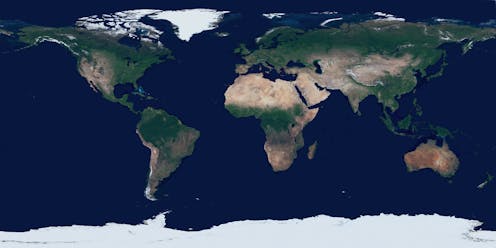Small sats are vital to Australia's space industry – and they won't be space junk
- Written by Michael Smart, Professor of Hypersonic Aerodynamics, The University of Queensland

Today the federal government released its response to the review of Australia’s Space Capability.
Among the details regarding the establishment of Australia’s first space agency, and a national space industry strategy, it is clear that small satellites will have a place in our space future.
The following recommendations were marked as “supported” or “supported in principle”:
Australia should […] take advantage of the global space technology paradigm shift towards constellations of miniaturised spacecraft for communications and Earth observations
[…] the Agency [should facilitate] regulatory approval processes for small satellite launch facilities in Australia and the launch of Australian satellites overseas.
But won’t all these new satellites just make the current space junk problem even worse?
Luckily, the answer is no. And it’s due to the satellite “self-cleaning zone” that surrounds Earth.
Read more: Trash or treasure? A lot of space debris is junk, but some is precious heritage
How satellites stay in orbit
For a satellite to remain in orbit around Earth, it must have a velocity of at least 7.9km per second, and must not drop below approximately 200km altitude in any part of its orbit.
If its velocity or its orbit is too low, it will be drawn back to Earth by a combination of gravity and atmospheric drag.
Another key aspect of a satellite’s orbit is its inclination relative to the Equator. Equatorial orbits – when the orbit is around the Equator – have zero inclination. Polar orbits, on the other hand, pass over both the north and south poles, and have an inclination of 90 degrees.
Other orbits sit at inclinations between 0° and 90°. The orbit of the international space station, for example, has an inclination of 51.6°. So it passes over the parts of Earth that are within 51.6° of latitude north and south of the Equator. Its orbit has an average altitude of 400km. (For comparison, the radius of the Earth is 6,378 km.)
The orbit of the International Space Station.Low orbits for small satellites
Until about the year 2000 almost all useful satellites (ones that performed functions such as communications or weather observation) were big – weighing as much as 10,000kg. They also tended to be in orbits with altitudes greater than 2,000km.
This has changed due to the rapid development of micro-scale, low-power electronics that we all use every day in our mobile phones. Satellites can now weigh just hundreds of kilograms and perform the same function in terms of communications and earth observation.
There is also a movement (including in Australia) towards even smaller satellites called “cubesats”, weighing less than 20kg, which have limited capability and life. One implication of this smaller size is the need to be close to Earth.
Modern small satellites are all in Low Earth Orbit, with altitudes less than 1,000km. For example, a company called Planet has a constellation of about 200 satellites which supply images of almost anywhere on the planet on a daily basis.
Polar (blue) and inclined (red) orbits around Earth.The self-cleaning zone
Despite the fact that the edge of Earth’s atmosphere is generally considered to be at 100km altitude, in reality it reaches much higher. In practice, any satellite in Low Earth Orbit will eventually be slowed down by impacts with air molecules and will return to Earth in a fiery re-entry. This may seem like a significant limitation for small satellites. But actually it is extremely helpful.
Due in part to their size limitation, most small satellite have a useful life of between one and five years. After this time a replacement satellite with the latest technology must be launched. If it wasn’t for the fact that Low Earth Orbit is a self-cleaning zone, the small satellite revolution would clog up the space around us with junk.
So when you hear about another planned constellation of hundreds of satellites, don’t worry too much. So long as they are in Low Earth Orbit, and most likely they will be, the Earth’s “vacuum cleaner” will clean up after us.
But what about the International Space Station? It is also in the Low Earth Orbit zone – so its orbit needs to be continuously maintained, which requires significant reserves of fuel. At some point, however, it will suffer the same fate as the much smaller Chinese space station Tiangong-1 and make a fiery re-entry.
Read more: China’s falling space station highlights the problem of space junk crashing to Earth
Authors: Michael Smart, Professor of Hypersonic Aerodynamics, The University of Queensland



